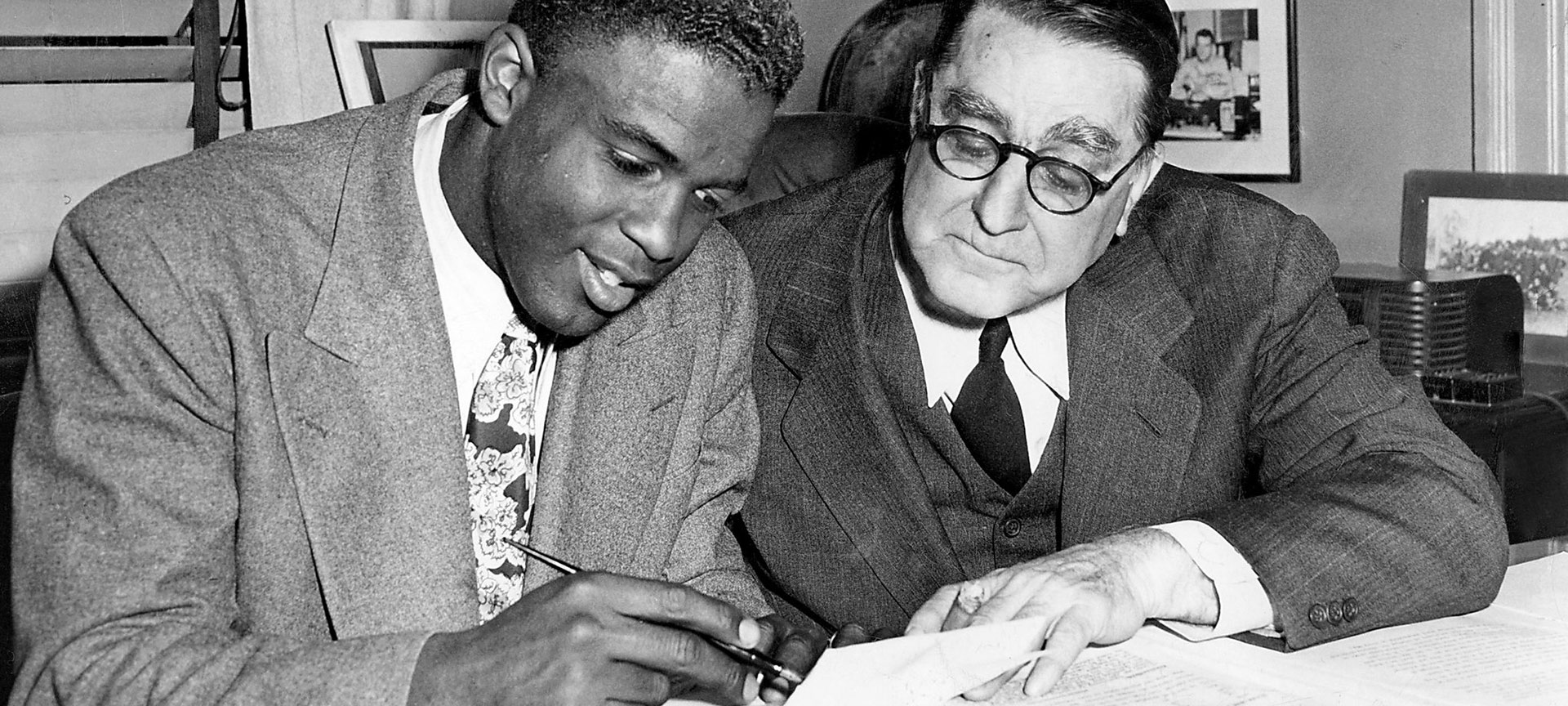Key Terms
Before beginning the lesson, write the Key Terms where the class can see them:
Ask students to read each definition and provide either an example of how they’ve seen that term used or, if they haven’t seen it in use, an example of how they think it could be used in a sentence. At the conclusion of the lesson, reflection questions will allow students a second opportunity to use the Key Terms.
Color Barrier: an implicit social code of racial segregation or discrimination, e.g. the exclusion of Black players from Major League Baseball.
Colored: The term “colored” was used to identify African Americans at the start of the Jim Crow era as non-white. Because of the term’s association with that overtly racist time, it is considered outdated today and can be viewed as offensive. Historically, however, some African Americans embraced the label “colored”. The famous civil rights organization, the National Association for the Advancement of Colored People (NAACP), did exactly that when it was founded in 1909. Similarly, the Colored World Series was the title the Black Negro League team owners decided to call their first championship. In this case and during this time period, “colored” was not considered offensive to the people who accepted the term.
Demographic: a particular sector of a population.
Jim Crow Laws: Laws created to enforce white supremacy, predominantly in Southern states, but also throughout the country. The laws mandated the segregation of Blacks and Whites and legalized voter suppression. Their enforcement results in brutal violence against Black people.
Mason-Dixon Line: the border between Pennsylvania and Maryland, which has become the unofficial line of demarcation between the American North and the American South.
Migration: the process of moving or being moved from one place to another.
Negro: The term “Negro” was used by Europeans in the 1500’s to identify the people of Africa. “Negro” is the Spanish word for “Black”. The term “Negro” traveled with the millions of enslaved Africans to the Americas starting in 1619. With the start of the Civil Rights Movement in 1955, young activists started referring to themselves instead as “Black” yet, mainstream African Americans continued to accept the term “Negro” to describe their race, as evident in baseball’s Negro Leagues.
Prejudice: a preconceived opinion that is not based on reason or actual experience. A negative opinion or judgment formed without just grounds or before sufficient knowledge.
Primary Source: the provider of direct or firsthand evidence about an event, object, person or work of art. Primary sources include historical and legal documents, eyewitness accounts, results of experiments, statistical data, pieces of creative writing, audio and video recordings, speeches and art objects.
Racism: A form of prejudice, discrimination, or antagonism directed against a person or people on the basis of their membership in a particular racial or ethnic group, typically one that is a minority or marginalized.
Reconstruction: a period of history in the American South, immediately following the Civil War, in which the former Confederate states faced the challenge of rebuilding their economy and social structure, which had previously revolved around slave labor.
Segregation: the action or state of setting someone or something apart from other people or things, or being set apart. The enforced separation of different racial groups in a country, community or establishment.
Sharecropper: a tenant farmer who gives a part of each crop to the landowner as rent.

